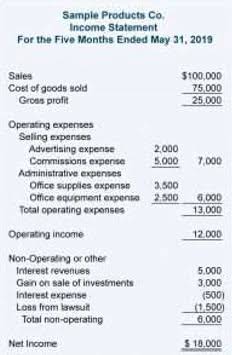
Financial liabilities are those liabilities in which a company or an individual has a contractual obligation to pay cash or deliver the financial asset. The primary classification of liabilities is according to their due date. The classification is critical to the company’s management of its financial obligations. Liabilities can help companies organize successful business operations and accelerate value creation. what are the two classifications for liabilities? However, poor management of liabilities may result in significant negative consequences, such as a decline in financial performance or, in a worst-case scenario, bankruptcy. Liabilities and assets are the core components of an organization’s financial reports, but they serve opposing functions.
- Following are examples the common types of liabilities along with their usual classifications.
- Financial liabilities are those liabilities in which a company or an individual has a contractual obligation to pay cash or deliver the financial asset.
- HighRadius offers a cloud-based Record to Report Suite that helps accounting professionals streamline and automate the financial close process for businesses.
- Having liabilities can be great for a company as long as it handles them responsibly.
- The predominant obligations typically encompass the most substantial ones, such as bills payable and obligations payable.
- They’re recorded on the right side of the balance sheet and include loans, accounts payable, mortgages, deferred revenues, bonds, warranties, and accrued expenses.
- Contingent liabilities are those liabilities that may or may not arise depending on the outcome of a future event.
Accounts Payable Solutions
Liabilities are the obligations and debts that a company owes. Expenses can be paid immediately with cash or the payment could be delayed which would create a liability. Liabilities are an integral part of any business’s financial framework. From short-term obligations like accounts payable to long-term commitments like bonds, they enable companies to operate, grow, and achieve their goals.
Example 1: Accounts Payable

In accounting, liabilities are defined as a company’s legal debts or obligations resulting from its operations. They are recorded on the right side of the balance sheet and must be settled over time through the transfer of money, goods, or services. A liability is a financial obligation a company owes to other parties. These stem from past transactions or events and result in an outflow of Accounting For Architects resources, usually in the form of money, products, or services. Liabilities are reported on a company’s balance sheet and determine its financial health. Non-current liabilities, particularly long-term debt instruments, often carry fixed interest rates.
Liability

Expenses are related to revenue, unlike assets and liabilities. Accounts Payable – Many companies purchase inventory on credit from vendors or supplies. When the supplier delivers the inventory, the company usually has 30 days to pay for it.


The AT&T example has a relatively high debt level under current liabilities. Other line items like accounts payable (AP) and various future liabilities like payroll taxes will be higher current debt petty cash obligations for smaller companies. Liabilities are categorised as either current or non-current based on their temporal nature. The predominant obligations typically encompass the most substantial ones, such as bills payable and obligations payable. The above mentioned items are commonly found on the balance sheet of most organisations, as they are crucial to both present and future business. Liabilities play a crucial role in a firm since they are utilised to fund operations and cover significant expansions.
